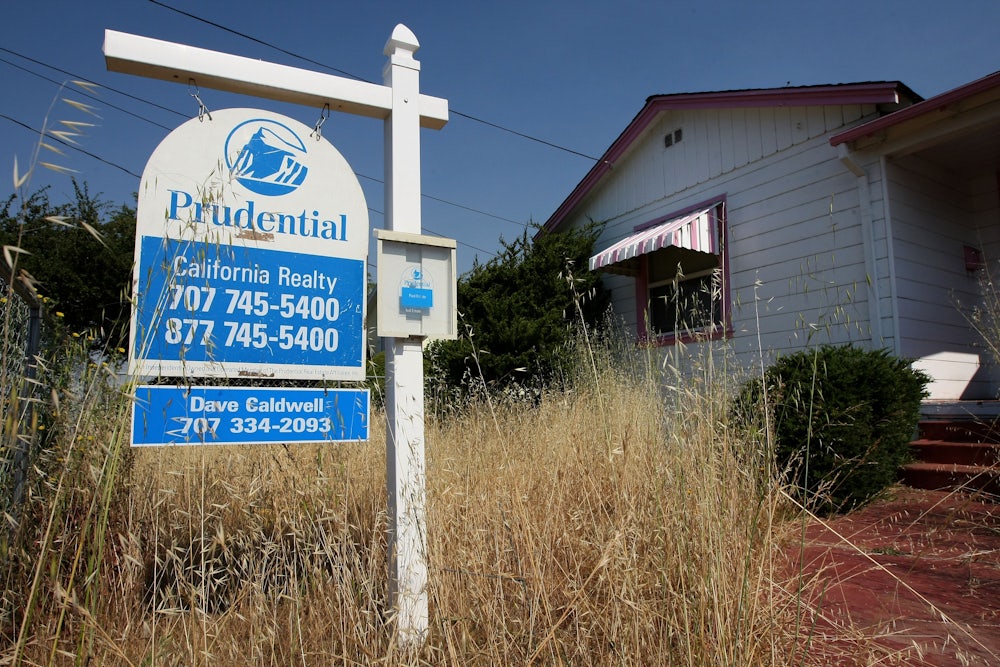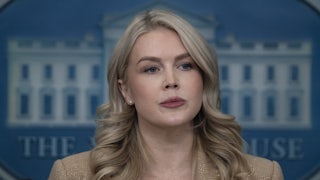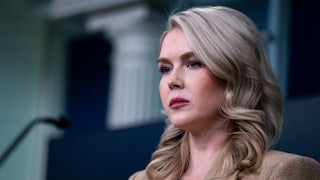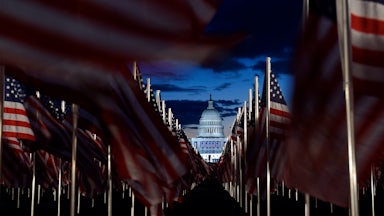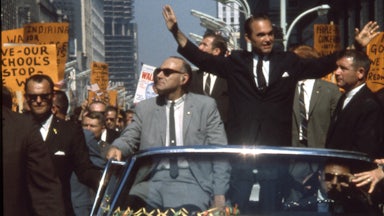The U.S. economy’s rebound from the Covid-19 recession has been five times faster than its recovery after the Great Recession. You read that right.
To explain this astonishing fact, and how workers have benefited, episode 10 of How to Save a Country features two people who have had front-row seats in the Obama and Biden administrations: Joelle Gamble, the current chief economist at the U.S. Department of Labor, and Heidi Shierholz, who was chief economist between 2014 and 2017 (she is now the president of the Economic Policy Institute).
Hosts Michael Tomasky and Felicia Wong talk with Gamble and Shierholz about how shifts in economic policy thinking over the last decade helped produce today’s record-breaking recovery. “The economy is not like the freaking weather,” Shierholz tells them. “It really is a policy choice. The difference in the speed of the recovery really, really underscores just how unbelievably important fiscal policy, like Keynesian stimulus, is to generating a strong recovery.”
Gamble and Shierholz discuss how to measure a recovery, why this inflationary moment tells a story of corporate profit, and the best way to shift people’s view of government’s role: “doing things that help people and doing them well,” as Gamble puts it.
How to Save a Country is presented by the Roosevelt Institute, The New Republic, and PRX. Generous funding was provided by the William and Flora Hewlett Foundation and Omidyar Network. Views expressed in this podcast do not necessarily reflect the opinions and beliefs of its funders.
Michael Tomasky: I’m Michael Tomasky, editor of The New Republic.
Felicia Wong: And I’m Felicia Wong, president and CEO of the Roosevelt Institute.
Michael: And this is How to Save a Country, our podcast on the ideas and the people contributing to a new political vision and a new economic vision for the United States. We connect the economy, democracy, and freedom.
Felicia: Because progressives need a common purpose and a common strategy to win.
Michael: In our last episode with Brad DeLong, we went way back in time to talk about economic ideas. In this episode, we want to take a closer look at much more recent history with two people who have had front-row seats to watch it all unfold: Heidi Shierholz and Joelle Gamble.
Felicia: Heidi is the president of the Economic Policy Institute and was the chief economist at the U.S. Department of Labor between 2014 and 2017.
Michael: Joelle is the current chief economist at the Department of Labor.
Felicia: We want to talk to them about where we are in the economy right now. We have been in the midst of an economic recovery from the pandemic. Here’s how Joelle explains exactly what a recovery is.
Joelle Gamble [clip]: So recovery is another way of talking about an economy that has been in a downturn that is now growing again essentially. How much it’s producing is an important measure. We look at output. We also, of course, though, look at jobs because workers are so critical to creating things in the economy. Recoveries that are sluggish are often recoveries that have sluggish job growth.
Michael: A lot of Americans today have already lived through one economic downturn in recovery, and that of course was the Great Recession of 2008.
Felicia: One of the features of that recovery was really slow job growth. In fact, that was the slowest American recovery in modern history. It took over six years for employment to bounce back. The recovery we’re living through right now has been pretty different in that regard. Jobs recovered three times faster than in 2008, even though this decline in employment was twice as bad as in 2008.
Michael: And another difference, of course, has been inflation. During the recovery from the Great Recession, inflation was so low that growth was actually sluggish. People worried about secular stagnation. Today, obviously with supply chain snarls and the war in Ukraine, inflation is real and a much thornier problem.
Felicia: Yeah. So we’re going to get into all of those weeds with Heidi and Joelle. We’ll explain exactly what inflation is. We’ll start off by comparing the Great Recession recovery to today’s recovery, which will tell us a lot about your favorite topic, Michael, how economic policy has changed over the last decade.
Michael: Yes. I love that. So here we go.
Felicia: Heidi Shierholz and Joelle Gamble, welcome to How to Save a Country. Heidi, can you kick us off by talking about the recovery you witnessed, you experienced pretty viscerally, when you were chief economist compared to today’s recovery.
Heidi Shierholz: My mind is boggled by how fast this recovery is relative to that recovery. I feel like I really cut my teeth on the work that I do now in the Great Recession. We just had this unbelievably slow, weak recovery and there were reasons for that. It was that Congress actually wouldn’t do what they should have done to actually spur a fast recovery. So Congress turned toward austerity, and that meant we had this incredibly slow—
Felicia: Austerity meaning not enough money spent to make sure that people could have good jobs and keep good jobs. Is that what that means?
Heidi: Yes, right. The economy was really, really suffering from a lack of demand. People didn’t have jobs and so they didn’t have income, so they couldn’t demand goods and services. But when they’re not demanding goods and services, then the workers who would have made those goods and services, they don’t have work. It’s just this whole big not enough demand in the economy and Congress could have stepped in and actually done the stimulus to spur a fast recovery like the one we have now and they chose not to. This recovery that we’re in right now where Congress did make good decisions, at least on that, is literally five times faster than the recovery from the Great Recession. It really is just night and day, and shows you that the economy is not like the freaking weather, like it really is a policy choice, how strong it is. It was just, we made a totally different policy choice.
Michael: There was the one Obama era stimulus of about $800 billion, but I assume you’re saying that that was too small. What do you think would’ve been a better size for that?
Heidi: I don’t have the exact size off the top of my head, but you’re totally right. We had the American Relief and Recovery Act, ARRA, that was the centerpiece legislation for fighting the Great Recession. I will just note that that centerpiece legislation was smaller than the stimulus that we passed in this recovery in December of 2020. Remember we passed the Cares Act right when Covid hit, and then things started to falter and we passed a much smaller stimulus bill in December of 2020. The flagship piece of legislation to fight the Great Recession was smaller than that December bill.
Michael: Joelle, is the lesson here that Keynesian economics, in terms of public investment priming the pump in countercyclical times, works?
Joelle: I definitely think being intentional about investing in the people, the people who actually make the economy go, is an important lesson that this administration took to heart when responding to the coronavirus downturn and the pandemic itself. The investments in states, the investments in care infrastructure, of course the investments in working people and working families, including the child tax credit, those are all designed to make sure that people were whole during the pandemic and when people are whole and they’re not seeing a huge fall in their income, they can then try to find a bit of normalcy in their lives, buy things that they need, go back to work. Frankly, workers even had some bargaining power in this recovery and so they could switch into higher paying, better quality jobs.
Michael: Heidi?
Heidi: I agree with everything Joelle just said. I do think that the difference in the speed of the recovery really, really underscores just how unbelievably important fiscal policy is, like Keynesian stimulus, to generating a strong recovery. One thing people will say is, “We had a big bounce back because we shut down the economy and then we lost 22 million jobs.” And it is absolutely true. Those first 12 million jobs that were just people coming back online who had been temporarily laid off, those really did come back pretty fast. But then the recovery really started faltering about eight or nine months later in late 2020.
Felicia: And so the American Rescue Plan—
Heidi: Yes.
Felicia: The subsequent funding is what you’re saying, the subsequent funding was important to making sure that that job market recovery continued.
Heidi: That’s totally right and at a similar point in the aftermath of the Great Recession, when the recovery was faltering, Congress just turned their back. They did not do the thing to generate the very strong recovery that we have had since the American Rescue Plan was passed.
Felicia: I have to now weigh in with the, no pun intended, elephant in the room because there are some who would contend that the inflation that we are all living through now was in part the result of spending in the American Rescue Plan. I know that’s really an issue of contention, so I just wanted to put that on the table and talk generally about the inflationary moment that we’re clearly living through. How do you understand it? What’s causing it? And how’s it hurting people?
Heidi: This question of, “OK, the American Recovery Plan Act had all these great effects, but what were the trade-offs? Did it spur this, this real spike in inflation that we’re seeing, which is causing all sorts of problems?” The huge weight of the evidence points to no. ARPA, the American Relief and Recovery Act, or other Covid relief and recovery actions, had very little effect on inflation, and I think probably the most straightforward way to see that is that high inflation is a totally global phenomenon among countries that did, and among countries that did not take major relief and recovery measures. So I can put some numbers on this.
Felicia: Please do.
Heidi: The core inflation rate over the last year in the United States—
Felicia: And what’s core inflation?
Heidi: What core inflation does is it strips out the volatile components, which are energy and food.
Felicia: So it’s price increases of everything except energy and food.
Heidi: And it’s such a weird thing because of course those are unbelievably important. People have to spend a lot of money on those things, so it sometimes rings funny to take them out and they’re only out for very technical reasons.
Felicia: Explain to us what’s happening in core inflation.
Heidi: So what is happening over the last, over the last year in the United States core inflation is 3.8 percentage points higher than it was pre-pandemic. But if you look at the average of all other [Organization for Economic Cooperation and Development] countries, minus Turkey, because Turkey is a huge outlier right now, that increase was 3.7 percentage points. So basically the same. So every country is seeing a big spike in inflation essentially, regardless of their fiscal policies. I think one thing to keep in mind, knowing that, is just how important the strong jobs recovery created by our Covid relief measures are. Imagine if we were facing this burst of inflation, but with millions more people out of work, it would be so much more damaging to working families.
Felicia: Right and Joelle, how do you think about inflation from where you sit now at the Department of Labor?
Joelle: That makes a lot of sense what Heidi was saying. I know we’re recording this in late October and we’ll get updated numbers, but the pattern should roughly remain the same. I think from where I sit within the Department of Labor, the Bureau of Labor Statistics produces the consumer price index, which is one of the two major measures of inflation and I believe those are the numbers that Heidi was quoting and so as we look at these numbers month to month, we also get real earnings numbers. We adjust how much people are earning for how much prices are going up. Right now, real earnings are down over the year, which is why we’re so focused on basically increasing people’s ability to purchase things in the economy, their purchasing power, through policy, through promoting good quality jobs, through promoting opportunities to get into better paying jobs because this is something people feel in their pocketbooks. They feel that the cost of living is going up even as wages are also going up and even as the labor market is very, very strong. We know that there’s still a lot of work to do here and there’s a lot we can do. The Inflation Reduction Act that was passed earlier this year makes some important steps on that point. The Social Security Administration has recently actually increased the size of benefits that seniors are going to get to make sure that it’s keeping up with inflation so that they’re purchasing power is going up. But there’s of course more we can do in terms of lowering the cost of care, lowering the cost of health care, making investments in the kinds of energy sources that will help people save money, and then of course, making sure people have power in the workplace so that they get the wages that their work deserves. They’re contributing to their firms. They should get paid their fair share and that is a very big focus for us right now.
Michael: Heidi, let me ask you another question about causes of inflation. It’s a controversial one, corporate profits. Some people say, yes, this is playing a huge role and corporate profits are quite high, profit hoarding. Others say, not so much of a role. The administration talks about it sometimes, but not all the time. Heidi, I wonder what you think about the role of corporate profits and the debate around it.
Heidi: I think the fundamental causes of our inflation are Covid and the war in Ukraine. Covid caused a big shift in demand from services to goods as people shifted their spending because they didn’t want to be face to face and they wanted to buy things that spiked their prices. There were supply chain snarls caused by the unprecedented demand for goods, and then by things like rolling porch shutdowns because of Covid and then the Russian invasion of Ukraine, spiked energy and food prices. So those are the fundamental causes, but I think there’s another way to analyze what’s driving inflation that I find useful and gets absolutely to your question and that is that basically everything in the U.S. economy can be broken down into three main components of costs: One, labor costs, which is basically wages and benefits; two, nonlabor costs, like equipment and materials; and three, corporate profits. You can actually look at what share of inflation over any period was being driven by any of those three components. It’s not theoretical. It’s empirical. It’s really straightforward and what you find when you do that is that about 40 percent of the increase in prices in this recovery are explained by an increase in corporate profits, and that is about three times the normal share. So it is absolutely true that a big part of the increased prices consumers are paying in this recovery is that corporations have been able to take advantage of the pandemic and the war to boost their profit.
Felicia: And probably also take advantage of the fact that in many sectors there isn’t a lot of competition. We have, essentially, monopolies or a lot of corporations that have outsized market power and so they can control the pricing. So that’s part of the problem too.
Heidi: I was just going to say that it’s just empirically true that corporations have been able to take advantage of the situation but then one of the things we’re hearing all the time is, “Oh, it’s being driven by workers being paid too much, wages going up too much,” and that is not what is driving it. So in that same breakdown that I just described, you can look at how much of the increase in inflation in this recovery was due to wages and it is about 20 percent of the increase in prices in this recovery are due to increase in wages, and that is about one-third their normal share. It’s just not a wage story. A big part of it is a corporate profit story.
Felicia: That’s really helpful, Heidi, which leads me to a question that I want to ask Joelle first. There is this debate that in order to beat inflation, we need to drive unemployment or in some ways claw back the gains that workers have made, as you’ve described over the last couple years. My question for you is how do we beat inflation without causing a lot of unnecessary and undue harm to workers?
Joelle: So right now there’s clearly a situation where demand for workers is higher than the supply of workers. We can see that by looking at the job openings data that’s produced by the Department of Labor surveys. We can also see that through the employment numbers and so that the mismatch is clearly there. But I think that there was a number of theories around how one might bring the labor market back into balance and some people believe that bringing the labor market back into balance is critical to bringing down inflation. That’s where a lot of that debate comes into play. Do you bring the labor market back into balance by just reducing demand from employers so we see openings decline a bunch? We have seen several months of a decline in opening without an increase in the unemployment rate. Or do you have to bring the labor market back into balance by increasing the number of people who are unemployed? That is not a debate that I would weigh into right now, but I will say that it is also a debate that sidesteps a larger question around the supply of workers, which gets to some structural issues from the pandemic, the bigger picture of how do we make sure that the U.S. economy can grow. It can grow in an equitable way, and it can grow sustainably and part of that is about investments in our ability to produce from the manufacturing side of things. A lot of talk around the Inflation Reduction Act was about that. “We’re investing in our productive capacity,” which is a really opaque way of saying we can produce more, more efficiently.
Felicia: Right. It’s this supply side focus that we’ve heard people talk about, and certainly I’ve talked about. We’re trying to actually increase the things that we can build and strengthen our supply chains and that also includes, making sure that we have a supply of workers who have the skills, talents, and are paid what they need to be paid in order to do these jobs well.
Joelle: That is exactly my point. There’s also a labor supply story that is just about the ability of the U.S. economy to grow and how do we do that in a way that is also fair to workers and helps people who want to work in the labor market get a chance to do so, thinking about things like care and job quality, access to benefits; thinking about things like, frankly, immigration; thinking about things like safety, for instance. There is a recent working paper that showed that elevated health absences from work, so people leaving the work for health reasons due to Covid, has likely led to 500,000 people missing from the labor market. There are some real issues here that shift the focus a little bit more on people frankly, which is often how I approach these questions, is what’s going on with people, and their experiences in the labor market that we can address through policy that both help them and help the overall economy.
Felicia: Just to go back to one thing that you had said before, Joelle, I know that you all are very concerned about job openings and whether or not too many job openings indicates this mismatch in demand for labor, but it does seem to me that over the last few months, job openings have calmed down, and yet we still have been adding jobs. So what that says is that maybe, maybe, maybe, and I’m really not in the business of prediction, but maybe, maybe, with job openings coming, and still adding jobs to the economy, we might be able to steer towards a softer landing. So I am hopeful about that, but certainly not trying to predict that.
Joelle: I also want to note that the mismatch between demand for workers and the supply of workers also varies quite a bit by industry, which is again, highlighting the fact that the pandemic really exposed how fragile and frankly dangerous a lot of our workplaces are for workers. Leisure and hospitality jobs are still nowhere near back to their February 2020 levels, even though there are currently more people working today than there have ever been and definitely more people working today than there were before the Covid-19 pandemic. You have to ask yourself why: low quality jobs, unpredictable hours, bad pay, higher than average exposure to a disease that could kill you. There’s a lot that we need to do on the job quality front as well and the industry by industry story of where there’s the biggest mismatch is sending a signal.
Felicia: That is super important, but now we’re going to pause to take a quick break. When we come back, we’re going to talk about political campaigning and the economy.
Michael: And just a quick reminder to our listeners, if you like the show, subscribe wherever you get your podcasts, and if you’re feeling generous, give us a rating or a review.
Felicia: Yeah, I really want to see those ratings and reviews. And also, for as long as Twitter is around, Michael, listeners can follow us there. I’m @FeliciaWongRI.
Michael: And I’m @MTomasky. Except no substitutes.
Felicia: Never would Michael. OK, see you on the other side of the break.
We’re taping this before the midterm elections. It will air after the midterm elections. But regardless, I think it is true that it has been difficult for progressive candidates to really talk about the economy, talk about all of these economic gains that we have seen in the last two years, in part because inflation has kind of put a chill on people’s ability to talk about anything in the economy. So I’d love to hear your thoughts on that, Heidi, what do you wish candidates were able to say about the economy, and maybe you can hypothesize about why you think they’re not saying it, but what do you wish they were able to say about the economy to the American people?
Heidi: This question really cuts at the heart of a lot of problems that we’re seeing right now. I’m a Ph.D. economist so I always have this idea if everyone could really understand exactly what is going on, then that would be the clearest path pointing toward the right things that we need to be doing right now. But it gets really tricky. So it’s hard for people who are running for office to say what is absolutely true right now. Yes, inflation is very, very high right now, that is 100 percent true, but there’s just not all that much that policymakers can do about that inflation because it is a global phenomenon caused by pandemic.
Felicia: You don’t think that would be satisfying as a stump speech?
Heidi: Yes. It’s so very, very hard to say, and it’s such a big thing. It looms so large in people’s minds.
Felicia: But what do you wish people were saying?
Heidi: It is that the pace of this recovery has just been unbelievable. It’s like nothing I have ever seen before and the fact that some people think right now, according to polls, that we’re actually in a recession is mind-boggling because we are in the fastest recovery in my lifetime, at least.
Felicia: They’re still feeling a whole lot of uncertainty, anxiety, fear, maybe that’s some of what that polling is picking up.
Heidi: Yeah and high inflation, stuff costs a lot of money. If we could just hold on until inflation comes naturally down because the things that are spiking inflation are abating.
Felicia: You mean supply chain problems.
Heidi: Price of oil coming down; supply chain problems are clearly easing; the spending patterns that shift from services to goods that caused a lot of inflation problems that’s normalizing. Other costs are slowing. We know housing costs spiked in the pandemic, but lately the cost faced by people’s buying homes or renters renting new places are clearly coming down. That’s not showing up in the overall numbers yet because the overall housing indexes, they take into account the average of everyone. When price of new homes is coming down, it takes a little while for that to have this broader effect, but it is calming. So those slowdowns are happening. If we can just hold tight, while we are still very much suffering through this spike in inflation, and really take stock of all that we have done, like the weirdly named Inflation Reduction Act, which is really a climate bill that has a potential to have just put us on a path toward not burning the planet down. It’s just these absolutely remarkable things that have been done, have not spiked our inflation rate as we know, as we already discussed, but are just incredibly important steps in the future of this country and this world frankly.
Michael: You’ve opened the door, Heidi, with a few of the things you’ve mentioned to a bigger picture discussion and Joelle we’d love to hear from you first on this. All four of us in our different ways are involved in this ongoing battle to change the economic paradigm of the country and to get away from the neoliberal free market presumptions that have governed so much of economic policymaking in the last 40 years and to move toward something different, something that is more rooted in thinking about workers, thinking about the middle class, emphasizing public investment, emphasizing that the public sector can create growth as well as the private sector. All the kinds of questions that you’re all familiar with. How far down that road, Joelle, are we?
Joelle: Well that is the million-dollar question, even adjusting for inflation.
Heidi: Several-trillion-dollar question
Felicia: $4 trillion question
Michael: $4.38 trillion question
Felicia: Oh boy, economist jokes, very bad. Sorry, Joelle, you should go.
Joelle: To be honest, it’s hard to say because where we are right now is what feels like another very reactionary moment, one where every time we release a number, prognosticators come up with their new predictions that they aren’t completely sure of until the next number comes out. That’s at least how it feels from where I sit, as someone who needs to keep track of ongoing trends and use data to inform policy decisions. So I am really interested in, I would say, two things: doing things that help people and doing them well, because that feels like the right long-term strategy for shifting how people view the role of government and how people view the role of government is critical to shifting the economic paradigm.
So that is how I view it, because it can feel very easy to get into the “who’s side is winning, who’s side is losing” and then of course, people move from one side to the other. People think something was a good idea yesterday. Today, they hate it and that’s just the nature of the beast. From where I sit, working in the Department of Labor, it’s hard to get into those kinds of debates when we have potential regulations that can help workers get classified properly, which we just proposed a rule around, the independent contractor rule.
Felicia: What does it mean to classify a worker?
Joelle: Some workers are classified as independent contractors, so not employees, so they don’t actually get all of the benefits that are accrued to them under the law. Those are the kinds of things that we have to focus on because if we can do that right, do it well, and people start to think differently about their relationship to government, to their workplace, to start to feel power, to start to feel like they are a part of a democracy, I think we’ll be in a better position to win this overall war over the paradigm, whereas right now the individual battles feel very reactionary, just to be honest.
Michael: This fight to change the way we make economic policy and the way we get Americans to think about economic policy, how many years is this fight going to take, do you think?
Heidi: It has been going on for decades. It used to be that people really, really thought that a perfectly competitive labor market was a reasonable approximation for what’s really going on in the world, not that it’s exactly true, but it’s a reasonable approximation. What that means is that economists believed that workers and employers essentially have equal power. They have equal footing. An employer loses their worker, that’s hard for them. A worker loses their job, that’s hard for them, and it’s kind of equal. The idea isn’t any inherent power balance that would require things like minimum wages or unions to actually create more balance in the labor market, that idea is really, really breaking down and economists now really recognize that that model of perfect competition actually isn’t a good approximation for essentially any labor market.
Felicia: Because some people have more power in labor markets than others.
Heidi: Yes, employers in particular have a lot more power inherently than workers. Losing one worker is not as big of a problem for them as a worker losing their job. It just is not. The idea that that is equivalent, people are waking up to that being a little bit just bonkers. And so once that idea is understood to be really problematic, then this whole structure crumbles.
Felicia: This whole structure of perfect competition in labor markets as part of economic dogma or economic common sense.
Heidi: Yeah and then all of the policy prescriptions that follow from that like, “We shouldn’t have a strong safety net.” “We shouldn’t have strong labor standards.” “We shouldn’t have a strong union movement.” All of those things that I just said, shouldn’t, shouldn’t, shouldn’t. The “shouldn’ts” were supported by the perfect competition, neoliberal, and that foundation is really crumbling. So there’s been a big shift, and I think it will—
Michael: And the shouldn’ts become shoulds.
Heidi: The shouldn’ts become “absolutely we should do this.” They can actually push our economy towards being running better, being more efficient. I think these are—I totally get Joelle’s point that there’s lots of reactionary stuff going on but just more broadly in the public discourse—but I think this shift amongst economists, that’s not going to go away so quickly. That is a real, you can actually just see the new academics coming up that understand the economy in a new way, and they’re not going to just go back on that broad, broad understanding of their field. I do think that there has been this really important shift that we’re still seeing it unfold and there’s certainly people within the and without the economics field that are fiercely resisting this change, but we’re seeing the effects now and we’ll be seeing them for a long time to come. You can see the effects already in the differences in priorities between the Obama administration and the Biden administration.
Felicia: Do you mean the priorities in terms of how important it is to promote unionization and the right to organize?
Heidi: Unionization, the right to organize, and also, the push for much larger stimulus packages. The Obama administration really was pushing for it and were just stymied. There’s just been obviously a big shift in the way people think about this to have allowed the response that we did in response to the Covid recession.
Felicia: So Joelle, what Heidi just said was that unions are important and that academic economists are newly understanding of union’s importance in strengthening labor markets. From where you sit in this administration, is that something that you are arguing for? Is that something that you can bring to life? And what is the economic rationale for that?
Joelle: I completely agree that the recognition that labor markets are not perfect is really important to a bunch of conclusions that argue for increasing workers’ power in the worker versus employer dynamic and that lands you on things like unions being a good countervailing power to employer power when it comes to someone trying to get a job or negotiate for higher wages, et cetera, to make sure that people get wages that are actually representative of how much value they bring to the firm, which is a lot.
I think that that’s a really important shift in the economic consensus that leads you to seeing unions as getting to better outcomes in the labor market economically. I think from where we sit at the Department of Labor, we very much support workers’ rights to unionize and there’s a lot of economic evidence that that can lead to a lot of outcomes that are really good for workers too. It’s not just about making the labor market about efficiency. Here you see things that are good for workers, like higher wages. You see things like better benefits, better job quality, fewer labor law violations from unionized workplaces.
Felicia: Yeah, we’ve talked to people about the importance of, we’ve talked to other guests, Dorian Warren in particular, about the importance of unions to ensuring workers’ basic health and safety.
Joelle: Yes, exactly, because it is about power. There are lots of ways in which employer power manifests in the workplace. It’s not just lower wages in what workers should be paid, it’s also the quality of the jobs. There are other ways to take a little bit more of workers’ share of what’s produced. That I all think is important, but there’s also broader effects. There’s some emerging research on the relationship between overall union density in the United States and economic inequality. So unions play an important role, it looks like, in actually reducing inequality overall in the U.S. economy as measured by income share. The top 10 percent’s income share was lower when unionization was higher in the United States and that trend in unionization has reversed. Union density is lower and inequality is also higher. That doesn’t mean that it’s inherently causal, one thing doesn’t inherently cause the other, but there’s clearly some relationship there and I’m glad to see that there’s a lot more research on that.
Michael: This has been really fascinating and we’re going to wrap it up now with the final question that we ask all of our guests, Joelle first and then Heidi. As you know, this show is called How to Save a Country, and that’s basically the question. What one big thing in your mind will save this country of ours?
Joelle: I might cheat and do two things, but I think they’re related.
Michael: Oh, all right.
Felicia: You get two.
Michael: Felicia, is that allowed?
Felicia: Yes, you get two wishes for how to save the country.
Joelle: Thank you. I’d say two things. So earlier I mentioned that I’m really just focused on trying to do things that help people and do them well, in part because that’s what we should be doing in government, but also because I think too often policymaking gets so convoluted. It becomes a pulley system of incentives that are designed to produce outcomes, but they’re done so in a way that people cannot access them. They do not understand it. They do not feel help and often they don’t actually get the help they need. And so bold policies that get people help, they know they got the help, and they know where it came from, which is, the democratic institutions that they elect, the leaders do what something that will actually help them and they feel it, I think that that is absolutely important that we focus on policies that are easy to understand and people can feel their effects. That’s the first thing. And I often use student debt cancellation as an important aspect of that, an important example. The other thing is, of course, democracy and folks having power in our democracy, which I’m sure many of your guests have brought up, but it’s so important, and we’ve been talking about unions, but unions are also critical to democracy as well. Democracy is not just a ballot box issue, though it really is an important one. It’s also about having power in your life, including in your workplace.
Michael: Well said. Heidi?
Heidi: I am going to stick on the union theme. I think there is no such thing as a fair economy without a strong labor movement, without workers being able to join together with their co-workers to make collective demands. The laws that ensure people have the right to unionize have just been totally shot through with loopholes so there’s this enormous gap between the share of people who want to be in a union and the share of people who actually are in a union. In order to truly have support for the right for workers to be able to join a union, we need fundamental labor law reform and there are some really great pieces of legislation that would take us in that direction: the Protecting the Right to Organize Act, the Public Service Freedom to Negotiate Act. Those are the kinds of things that we need to pass.
Felicia: Heidi Shierholz, Joelle Gamble, thank you so much for your time today. Thank you so much for your service to our country, literally your service to our country. We so love talking to you here on How to Save a Country, so thank you.
Michael: Really grateful.
Joelle: Thank you so much. It’s been wonderful.
Heidi: Thank you for having us.
Felicia: So Michael, I want to pick up on that last thing we talked about with Heidi and Joelle: unions. We are seeing such a renewed interest in unions from so many different sectors, so many different people. We’ve talked about unions, as it turns out, a lot on this show. There was even an article in Forbes, pretty mainstream, published recently by Rick McGahey and it was called “America’s New Industrial Policy Needs Unions.” And Rick basically argues that the kind of industrial policy that the Biden administration is pushing, the kind that we talked to Brian Deese about earlier on in this show, that idea that affirmative government investment in certain sectors is the way forward, all of that strategy works best when those sectors are strongly unionized.
Michael: Yeah not only that, I’m still old fashioned enough to believe that unions help build a stronger and more stable and more secure middle class. That’s what happened after World War II.
Felicia: Stronger democracy
Michael: Stronger democracy and more freedom and it can happen again, not on the same scale. We’re never going to get to the point where 34 percent of the private sector workforce is unionized—I don’t think that’s ever going to happen again—but right now it’s about 6.5 percent. If that could even be doubled, that would be an amazing development and would have all kinds of positive effects on the workforce and I believe the economy.
Now, Felicia, what’s going on next week? What do you want to tell our listeners about next week’s guest?
Felicia: Next week, drum roll, we have Senator Elizabeth Warren on the podcast.
Michael: That’s pretty cool.
Felicia: Yeah, it’s great. She wants to save a country apparently.
Michael: So you don’t want to miss that folks.
Felicia: Nope, looking forward to it. How to Save A Country is a production of PRX in partnership with the Roosevelt Institute and The New Republic.
Michael: Our coordinating producer is Cara Shillenn. Our lead producer is Alli Rodgers. Our executive producer is Jocelyn Gonzalez, and our mix engineer is Pedro Raphael Rosado.
Felicia: Our theme music is courtesy of Codey Randall and Epidemic Sound. Other music is provided by APM. How to Save a Country is made possible with support from Omidyar Network, a social change venture that’s reimagining how capitalism should work. Learn more about their efforts to recenter our economy around individuals, community, and societal well-being at omidyar.com.
Michael: Support also comes from the Hewlett Foundation’s Economy and Society Initiative, working to foster the development of a new common sense about how the economy works and the aims it should serve. Learn more at hewlett.org.
